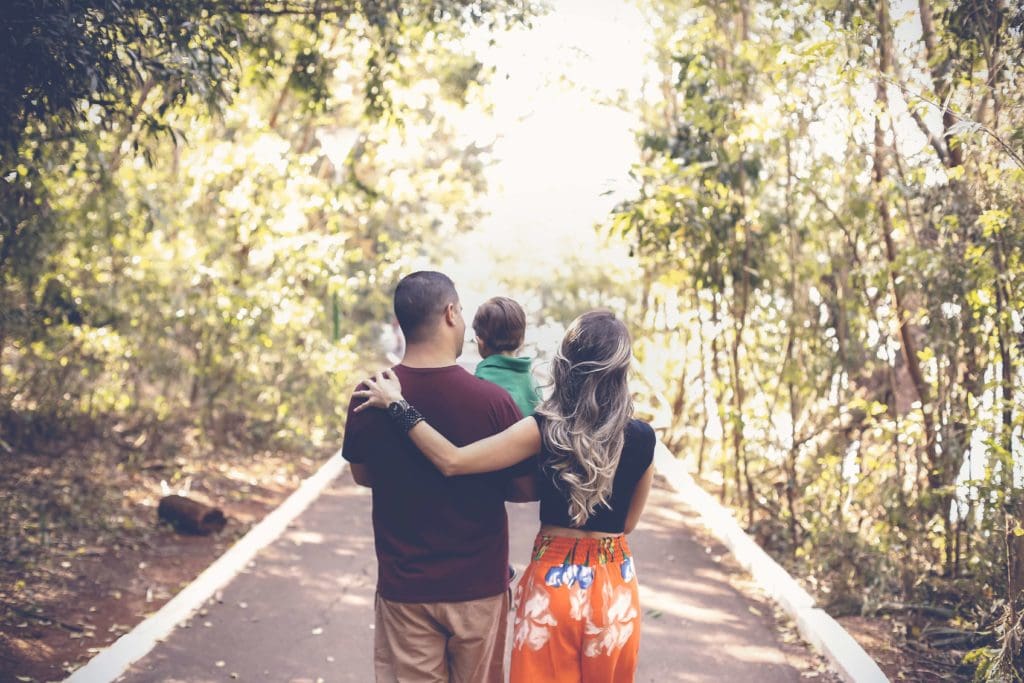
By Noah Lenstra
A chronic disease specialist, a public librarian, and the Executive Director of a bicycle & pedestrian coalition walk into a bar…
Is this a joke setup? No! This is the story of how different sectors came together in Montpelier, Vermont, in the Fall of 2007 to create something new that has since spread across America, and beyond.
While working for the Vermont Department of Health, Anne Fergusons’ job focused on the prevention of chronic disease, particularly among adults.
“I realized if I did something active for the children, then … the parents would [just] be standing around,” said Ferguson in a 2018 interview.
Getting People Physically Active
She wanted to find a way to get children and parents physically active together so she came up with the idea of posting a children’s storybook along a walking trail. Since the initiative used books written for children under seven years old, parents would have to accompany them as they walked from page to page.
The initiative has the added bonus of encouraging literacy, which can be a social determinant of health.
To get her vision out of her head and into communities, Ferguson needed partners. With funding from Blue Cross Blue Shield of Vermont and the Vermont Humanities Council, Ferguson teamed up with Nancy Schulz, executive director of the Vermont Bicycle and Pedestrian Coalition, and Rachel Senechal of Montpelier’s Kellogg-Hubbard Public Library, to create an infrastructure around the idea.
How the Idea Grew
Within a year, StoryWalks were up along walking paths in at least 10 communities across Vermont.
Ferguson was concerned someone might take the concept and monetize it, so to prevent that possibility in 2010 she registered a trademark for the word “StoryWalk.” Anyone can use the word as long as they do so for non-commercial purposes attuned to the original concept, promoting physical activity and literacy.
From there, the idea spread like wildfire. Ferguson stopped keeping track of the concepts that spread after they showed up in all 50 states and a dozen more countries.
The concept spread even further during the COVID-19 Pandemic when public libraries were closed to the public, and public librarians were seeking novel ways to keep engaging their communities.
Although not all StoryWalk projects have public librarians as partners, they can often help these initiatives both get going and stay going. Librarians have access to titles that can be used for StoryWalk installations, and often have insights as to what books will work best for different demographics and times of the year.
Unique Funding
They also sometimes have access to unique funding streams. During the COVID-19 Pandemic, many public librarians received federal funding via the American Rescue Plan Act (ARPA) to create or extend StoryWalk installations.
For instance, in Ohio, the Stark Library received a $38,000 American Rescue Plan grant to establish a permanent StoryWalk trail that the library would keep updated with new titles on an ongoing basis.
The grant was a partnership with Stark Parks. The library’s Stephanie Cargill told a local reporter, “We really want to bring the partnership together and bring reading to kids who might not otherwise pick up a book.”
Similarly, in my state of North Carolina, Charlotte-Mecklenburg County public librarian Emily Nanney told me that their StoryWalk initiative, in partnership with Mecklenburg Parks & Recreation, strategically focused on what Nanney called “book deserts,” areas of the city where access to free books was low.
Involving the Community
As America Walks reported in September 2021, more and more librarians are seeking novel ways to collaborate with community partners to make communities thriving, walkable places.
Librarian Kay Kay DeRossette wrote how a 2020 America Walks Community Change Grant enabled her and the Central Arkansas Library System to not only install a StoryWalk at one of the library’s branches, but to also begin working with other partners to make sure that branch and other library locations are walkable. In partnership with the local Safe Routes group, “Over 200 stakeholders were engaged in [a] project where they were tasked with assessing walkability surrounding the Children’s Library,” which led to a temporary, month-long road diet to increase the visibility of efforts to connect people to the library.
What started as an effort to place stories outside a library morphed into an effort to ensure that all can safely walk to libraries.
Who could walk into the proverbial bar in your community to get a StoryWalk going?
How could you use the partnerships that come together to create a StoryWalk to increase walkability more generally in your community?
I’d love to hear your thoughts on these questions! Reach out to me at Noah Lenstra, lenstra@uncg.edu.